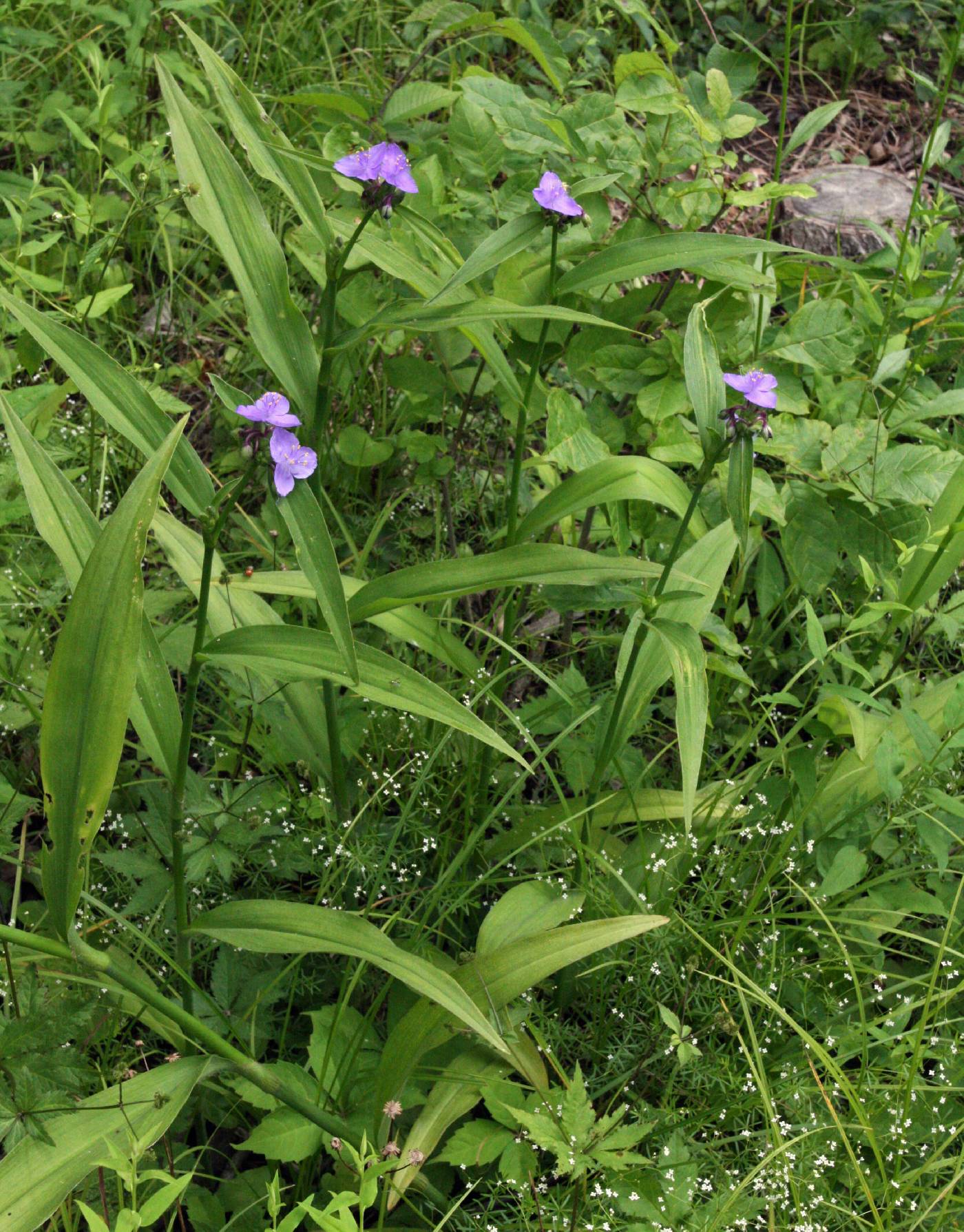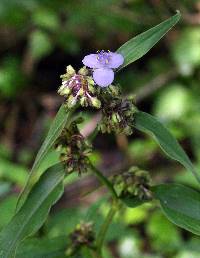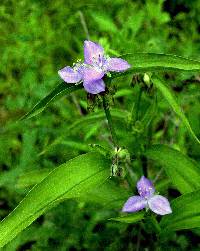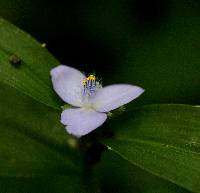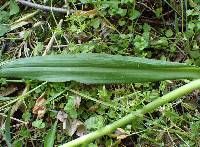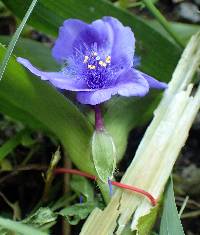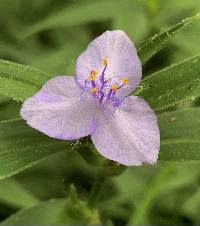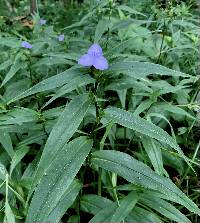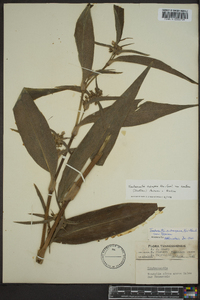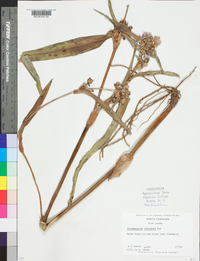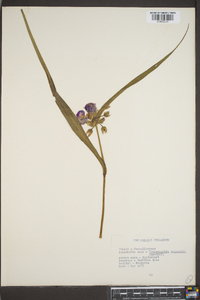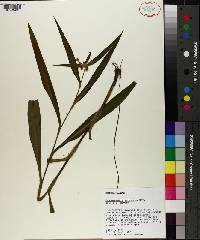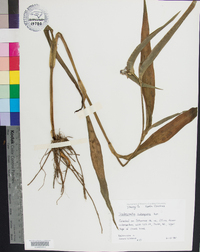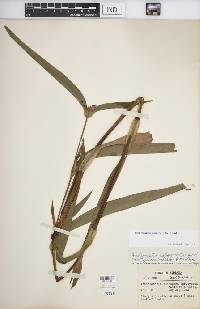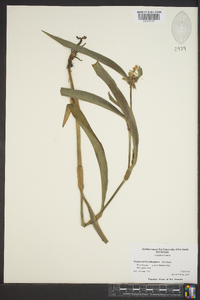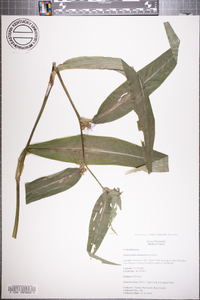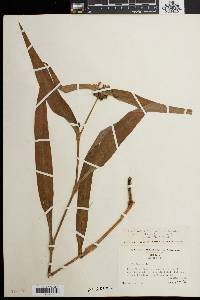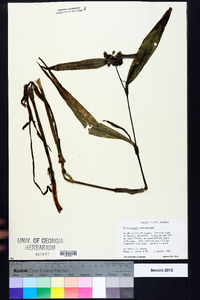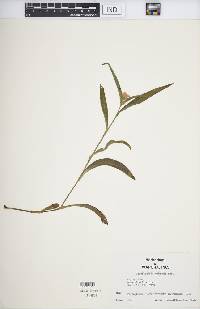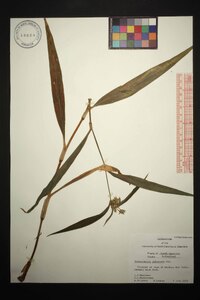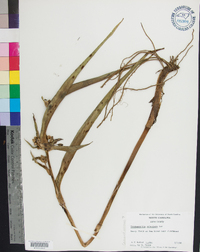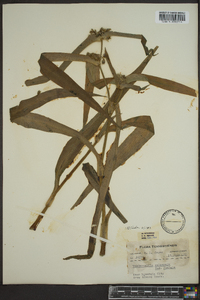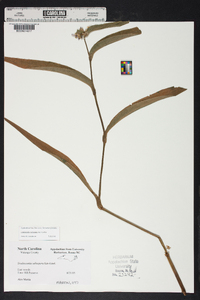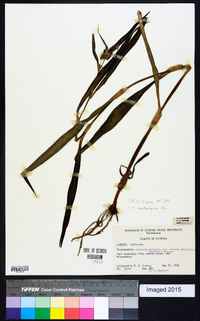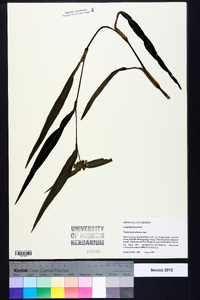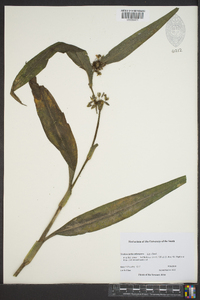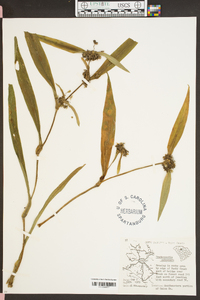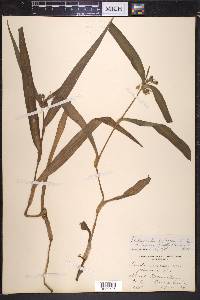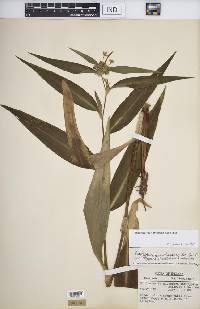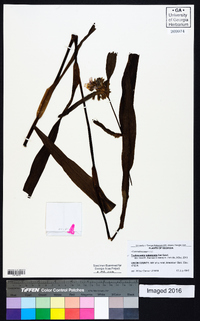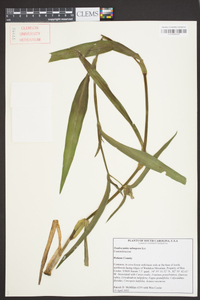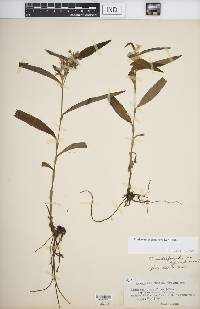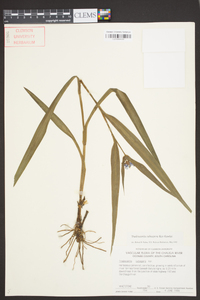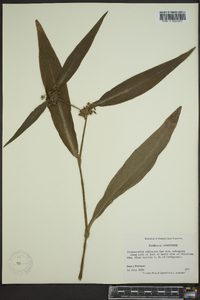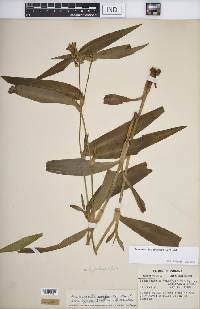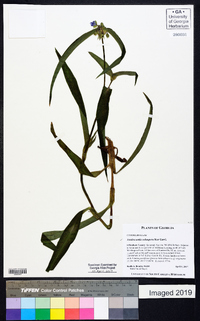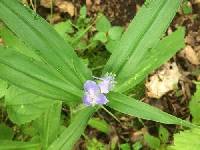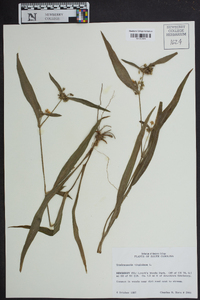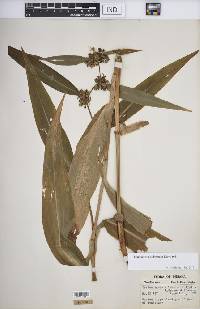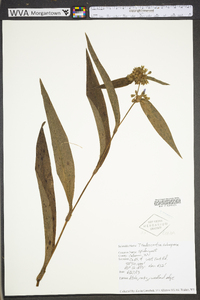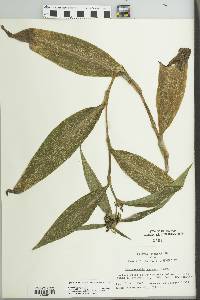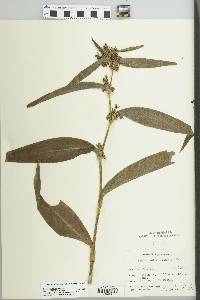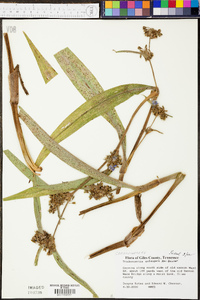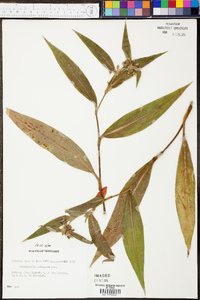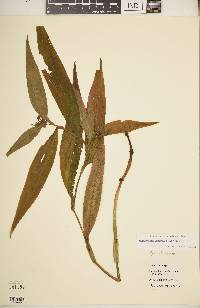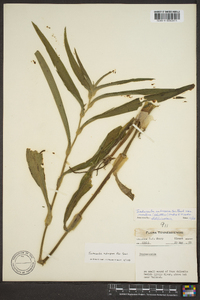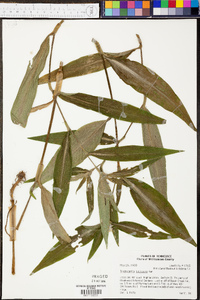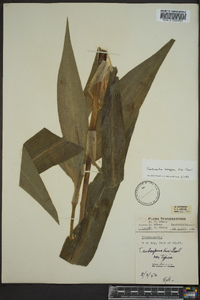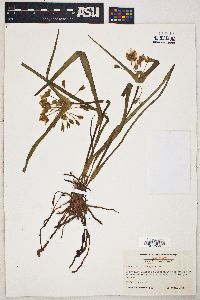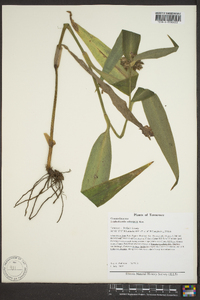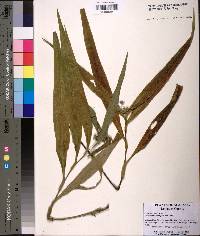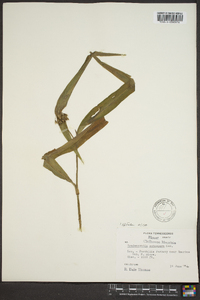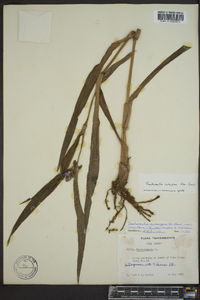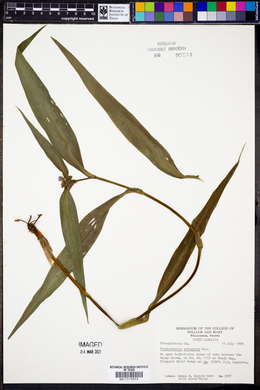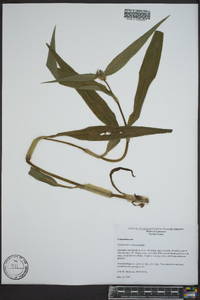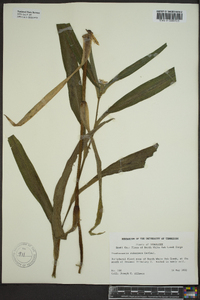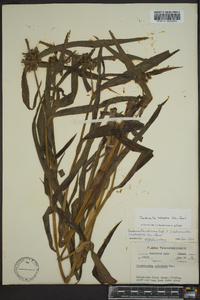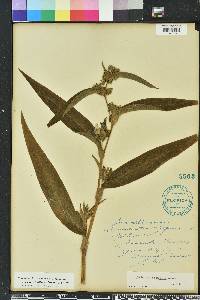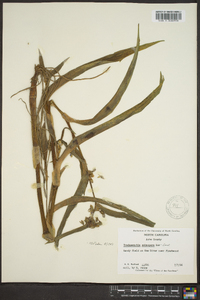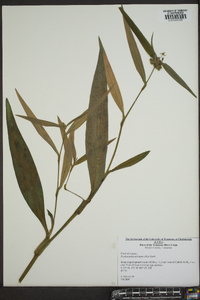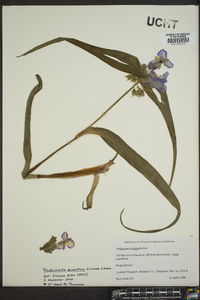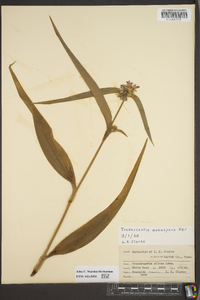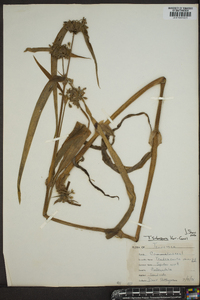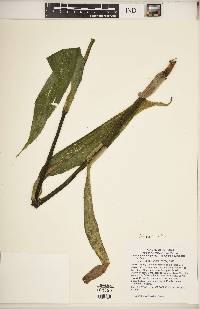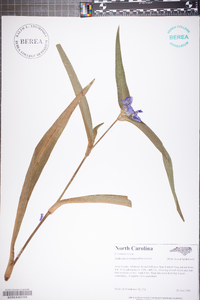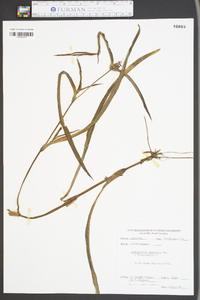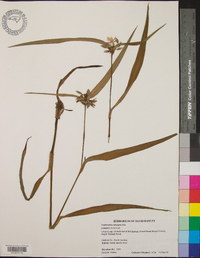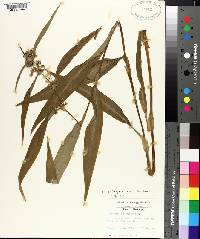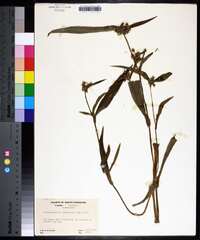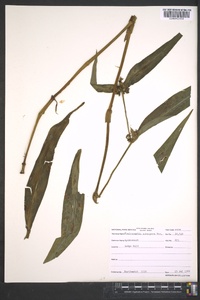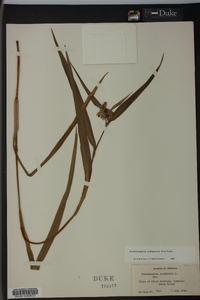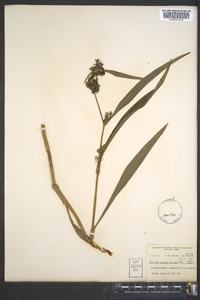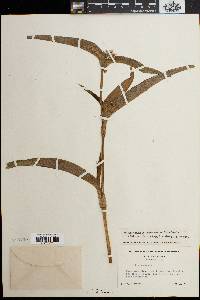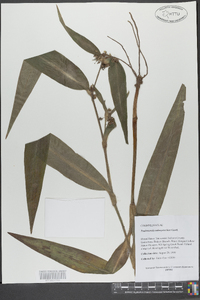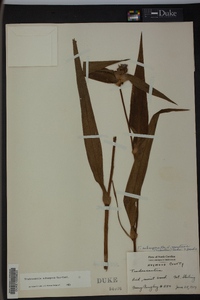
|
|
|
|
Family: Commelinaceae
Zigzag Spiderwort
|
Herbs, erect or ascending, rarely rooting at nodes. Stems often flexuous, 30--100 cm; internodes pilose to glabrescent. Leaves spirally arranged, at least proximal ones distinctly petiolate; blade dark green, lanceolate-oblong to lanceolate-elliptic or lanceolate, 6--30 ´ (0.4--)1--6.5 cm (distal leaf blades wider than sheaths when sheaths opened, flattened), apex acuminate, glabrous to puberulent. Inflorescences terminal, usually also axillary at distal nodes, axillary inflorescences sessile or variously pedunculate; bracts foliaceous. Flowers distinctly pedicillate; pedicels 1--1.7 cm, pilose to glabrous; sepals 4--10 mm, puberulent with glandular, eglandular, or mixture of glandular, eglandular hairs, occasionally glabrous; petals distinct, light to dark blue, rarely white, broadly ovate, not clawed, 10--15 mm; stamens free; filaments bearded. Capsules 4--6 mm. Seeds 2--3 mm. 2n = 12, 24. Flowering spring--fall (May--Sep). Rich woods along streams and on slopes and bluffs, less commonly dry woods, roadsides, fields, or along railroads; Ala., Ark., D.C., Fla., Ga., Ill., Ind., Ky., La., Miss., Mo., N.C., Ohio., S.C., Tenn., Va., W.Va. Two varieties are recognized by E. Anderson and R. E. Woodson Jr. (1935): Tradescantia subaspera var. subaspera, with the stems more or less conspicuously flexuous distally and the distal lateral inflorescences sessile (western extensions of Appalachian Plateau from western West Virginia, central Kentucky, and Tennessee to Illinois and Missouri); and T. subaspera var. montana (Britton) Anderson & Woodson, with the stems straight or only slightly flexuous distally and all the lateral inflorescences pedunculate (southern Appalachians from southwestern Virginia to northern Alabama and Georgia, also the coastal plain from northern Florida to Louisiana). Many specimens can only be determined by their locale, so I do not find the separation of the two varieties very meaningful. The distribution record for the District of Columbia is based on a specimen believed to be a garden escape; that from southern Florida on a specimen cited by C. Sinclair (1967).
Perennial herb to 1m tall Stem: fairly stout, erect to ascending, seldom rooting at the nodes, softly hairy to nearly hairless. Leaves: spirally arranged, dark green, 6 - 20 cm long, 1 - 4 cm wide, lance-shaped to narrow elliptic with a pointed tip, hairless to slightly hairy and lined with tiny hairs along the margin, the base wrapping around the stem to form a sheath. The blade is wider than the circumference of the sheath. Inflorescence: terminal, sometimes axillary in upper nodes, subtended by leaf-like bracts. Flowers: borne on softly hairy to hairless stalks 1 - 2 cm long, with three sepals 5 - 10 mm long and sometimes hairy, three light to dark blue (seldom white) petals 1 - 1.5 cm long and not clawed, unattached stamens, bearded filaments, a slender style, and a head-like stigma. Fruit: a three-valved and three-chambered capsule 4 - 6 mm long, containing six 2 - 3 mm long seeds. Similar species: The Tradescantia species found in the Chicago Region can most easily be distinguished by the size of their leaves and presence or type of hairs on the sepals, flower stalks and bracts. Tradescantia virginiana leaf blades are as wide as or narrower than the sheaths (less than 2 cm) and more than 10x as long as wide; the sepals, flower stalks and bracts are hairy. Tradescantia ohiensis leaf blades are as wide as or narrower than the sheath (less than 2 cm) and more than 10x as long as wide; the sepal tips are sometimes hairy and the flower stalks are hairless. Tradescantia bracteata leaf blades are as wide as or narrower than the sheath (less than 2 cm) and more than 10x as long as wide; the sepals and flower stalks are covered by a mixture of non-glandular and glandular hairs, but the bracts are hairless. Flowering: June to September Habitat and ecology: This species is rare in the Chicago Region, but more common further south. It grows along streams and ravine slopes. Occurence in the Chicago region: native Etymology: Tradesecantia is named after John Tradescant (d. 1638), the gardener of King Charles I. Subaspera means "somewhat rough." Author: The Morton Arboretum Stem rather stout, 4-10 dm, with 4-10 nodes, glabrous or sparsely pilose; lf-blades firm, dark green, lanceolate, glabrous or sparsely pilose, ciliate-margined, the larger 10-20 נ2-4 cm, tapering to a petiole-like part much narrower than the sheath; cymes terminal and usually also lateral from the upper nodes, sessile or short-peduncled; pedicels 1-2 cm, thinly hairy or glabrate; sep 5-10 mm, thinly to densely hairy with glandular or eglandular hairs or both; pet 10-15 mm; 2n=12, 24. Rich moist woods. Var. subaspera, with the stem conspicuously flexuous above, and with the uppermost lateral cymes sessile or nearly so, occurs chiefly w. of the mts., from W.Va. to Tenn., w. to Ill. and Mo. (T. pilosa) Var. montana (Shuttlew.) E. S. Anderson & Woodson, with the stem straight or nearly so, the uppermost lateral cymes pedunculate, occurs chiefly in the mts., from Va. to W.Va. to Ala. and Fla. Gleason, Henry A. & Cronquist, Arthur J. 1991. Manual of vascular plants of northeastern United States and adjacent Canada. lxxv + 910 pp. ©The New York Botanical Garden. All rights reserved. Used by permission. From Flora of Indiana (1940) by Charles C. Deam Usually infrequent but well distributed throughout the state except in the northern part from which there are no records or specimens. It is a woodland species and is rarely found in the open. It prefers the moist, rich, wooded terrace slopes along streams and the slopes of ravines and is less frequent in level woods. …… Indiana Coefficient of Conservatism: C = 4 Wetland Indicator Status: N/A |
|
|
|

